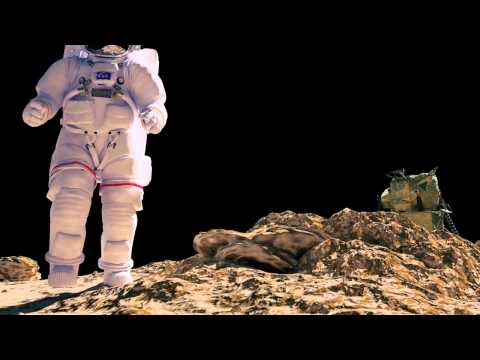Astronauts Show How NASA’s DART Mission Will Change an Asteroid’s Motion in Space
Hi, everyone, I’m Thomas Pesquet, and I’m with my favorite astronaut, Shane Kimbrough, up here on the space station. Today, we’re going to talk about a very cool new NASA mission called DART. Can you tell us, and tell me a little bit more about what is NASA’s DART mission and what does NASA’s DART mission stand for? OK. Yeah, so DART is NASA’s first planetary defense test. So we’re going to we’re going to try to do something we’ve never done before with a spacecraft. DART stands for Double Asteroid Redirection Test, so a nice acronym, NASA does like acronyms. DART is another one. And now the purpose of this spacecraft in this mission, it has one purpose, and that’s the crash itself into an asteroid and try to redirect it or try to move it into a different orbit. So today, Shane, we’re going to demonstrate some of those principles that you laid out before. But can you tell us exactly how we’re going to do that? Well, I can try. We’re going to. It’s a first time for us, but we’re going to try to demonstrate this, this asteroid kinetic deflection method, which is really the moment that that that spacecraft crashes into the asteroid. So we’re going to use microgravity up here because we have that all the time and we’re going to try to show you kind of how this is going to work when the asteroid is hit by this spacecraft called DART. So here we go. So what I’ll do, Shane’s going to be the asteroid and I’m going to be the NASA dark mission. And this CTB more exactly, is going to be a spacecraft. I’m going to try to throw it and we look at the effect of that mass coming at him and the kinetic energy transfer from the CTB to Shane. Shane will be perfectly stable. It’s not an easy task. You’re ready? All right. Here it comes. I’ve redirected Shane successfully. Yeah, pretty good. A while ago, we got out the door and we got some new solar arrays here on space station, and so the same technology we have here now in the space station is going to be used to power the DART mission on its way to this asteroid. IROSA, in case you didn’t know, but you knew it stands for ISIS, rolled out solar arrays, so we got a chance to go outside and install the very first two of these new IROSAs or roll out solar arrays on the very end of the space station out on the port side. These are different because for one, they’re much lighter and smaller. To me, they look very fragile. We’re picking them up and moving them, but they’re rolled up. So they when they launch, they’re kind of rolled up into a compact cylinder, which is great for launch conditions. And then once they get up on the space station or in space for a satellite or something, they can then roll these things out to be useful. And so the same technology we have here now in the space station, it’s going to be used to power the DART mission on its way to crashing into an asteroid.












